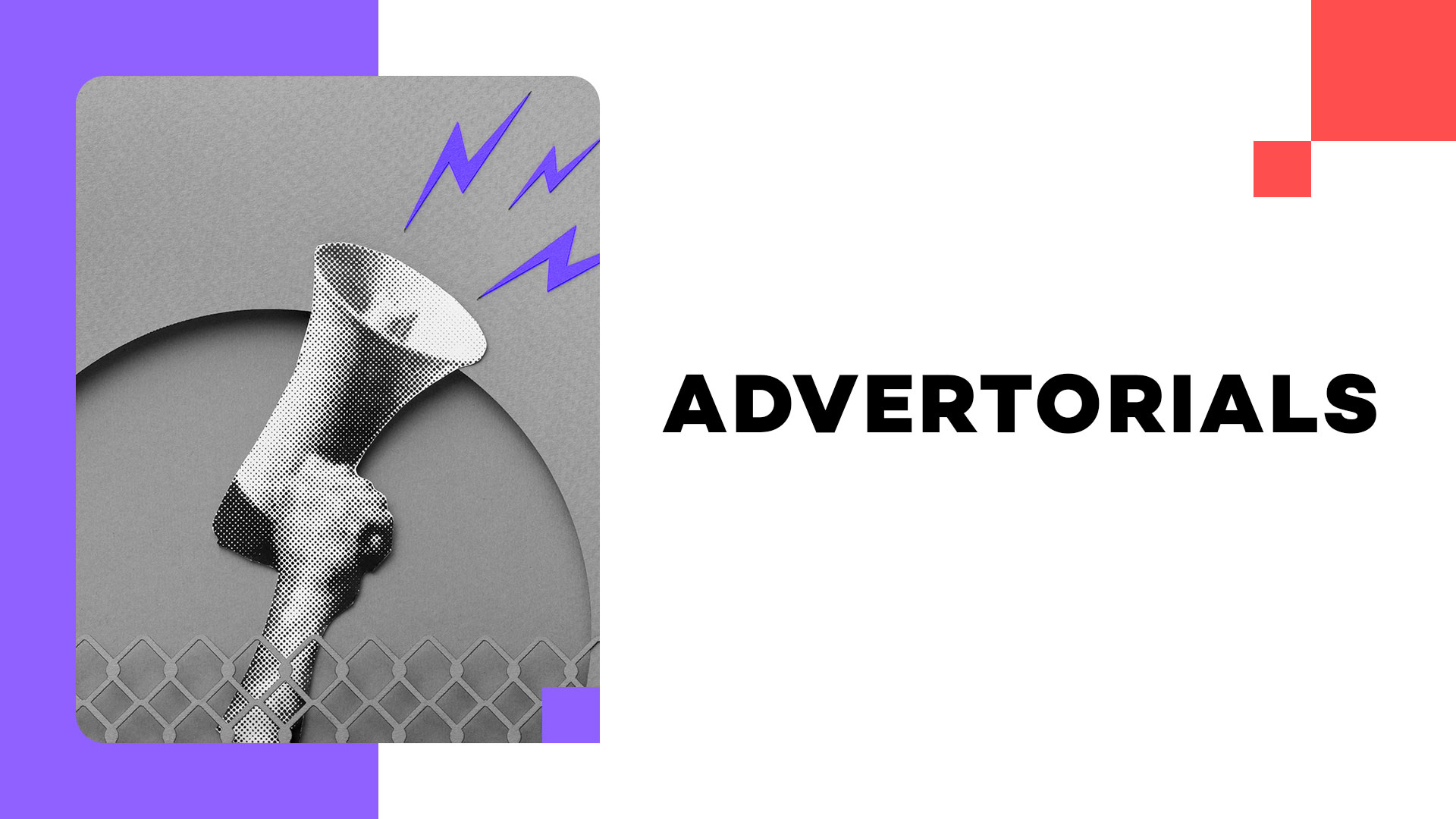Insbesondere im SEO sind Advertorials gefragter denn je, da sich damit wertvolle Backlinks generieren lassen. Wie du mit Advertorials am besten umgehst und worauf du achten musst, erfährst du jetzt.
Das sagt Google zu Advertorials
we’ve seen a little bit of problems, where there’s been advertorial or native advertising content or paid content that hasn’t really been disclosed adequately, so that people realize that what they were looking at was paid. So that’s a problem. We have had longstanding guidance, since at least 2005, that says, look, if you pay for links, those links should not pass PageRank.
Matt Cutts, Softwareentwickler bei Google
Now, if someone were to come to a newspaper reporter and say, I’m going to give you some money, can you link within your editorial story that you’re writing, your news article? That would be deceptive. People would not realize that there was payment involved. And it would really not be fair. So paid links, that pass PageRank, change the landscape. It makes it uneven, so that people can’t compete on a level playing field. And that’s what we want to ensure that we have on the web and, certainly, within Google’s web index.
Matt Cutts, Softwareentwickler bei Google
Definition Advertorial
Ein Advertorial wird als Kofferwort bezeichnet und setzt sich aus zwei englischen Wörtern zusammen, nämlich aus advertisement (zu dt. Anzeige) und editorial (zu dt. Leitartikel). Ein Advertorial ist ein redaktioneller Artikel bzw. Beitrag worin sich versteckt Werbung befindet. Eine klare Trennung zwischen Anzeigen und redaktionellen Artikel ist bei Advertorials nicht immer gegeben.
Von den Lesern werden Advertorials positiv angenommen, da sie die Beiträge im gleichen Umfeld der Webseite konsumieren und nicht als Werbung eingestuft werden.
Beispiel 1: Advertorial
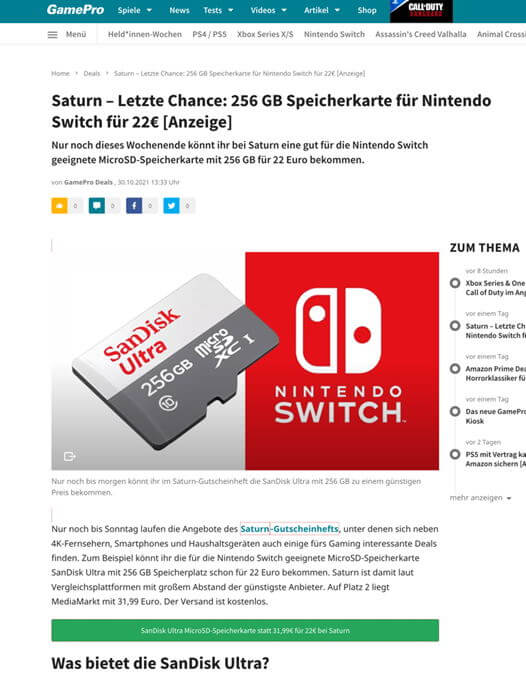
Dieser Beitrag von gamepro.de zeigt eindeutig, dass es sich hier um einen Artikel handelt, der womöglich gekauft ist. Durch den präsenten Schriftzug „Anzeige“ oben in der Mitte, weiß der User sofort, dass es sich um einen Artikel handelt, der wahrscheinlich nicht nur gekauft ist, sondern auch Werbung enthält.

Beispiel 2: Advertorial
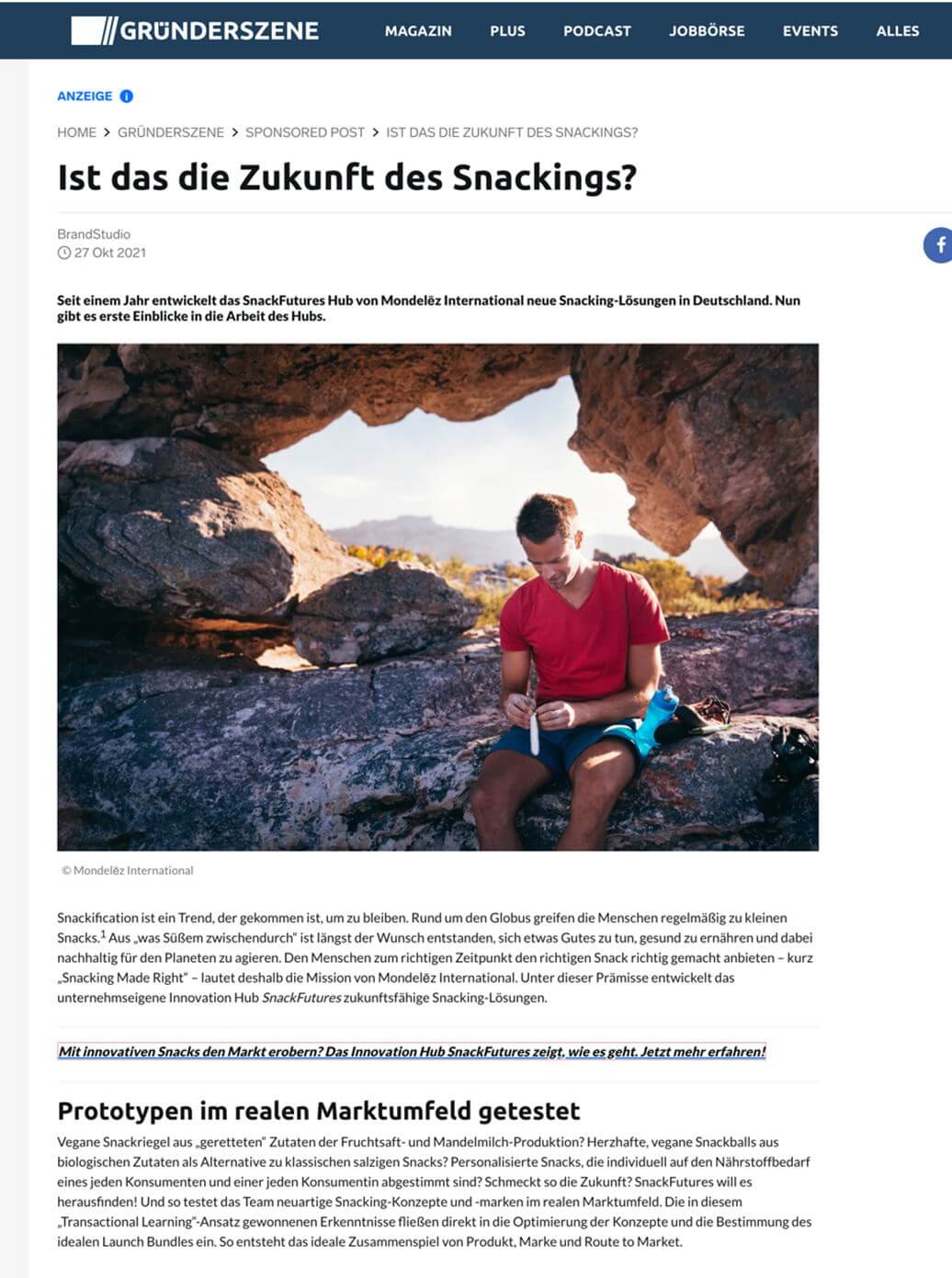
Bei diesem Artikel handelt es sich um eine bezahlte Anzeige. Dies wird deutlich durch das Wort „Anzeige“ welches sich oben links befindet.

Advertorials – Wann und warum werden sie gekennzeichnet?
Es gibt verschiedene Arten von Advertorials. Wenn du einen bezahlten Artikel bzw. Sponsored Post auf deiner Webseite veröffentlichst, ist das nichts Verwerfliches. Wichtig ist, dass der Beitrag als „Sponsored Post“, „Anzeige“, „Werbung“ oder „Advertorial“ gekennzeichnet ist und die Links mit dem nofollow Attribut (rel=“nofollow“) versehen sind.
Somit weiß Google, dass es sich um redaktionelle Werbung handelt, die entsprechend gekennzeichnet ist. In diesem Fall verstößt du nicht gegen die Google Richtlinien und kannst den Artikel ruhigen Gewissens auf deiner Seite veröffentlichen.
Wenn du allerdings den bezahlten Artikel bzw. Sponsored Post nicht auf nofollow setzt, aber mit „Sponsored Post“, „Anzeige“, „Werbung“ oder „Advertorial“ kennzeichnest, signalisierst du Google, dass es sich um einen gekauften Artikel handelt. Das ist ein Verstoß gegen die Google Richtlinien.
Wo es dann richtig brenzlig wird, ist, wenn der bezahlte Artikel nicht gekennzeichnet ist und er dofollow-Links enthält. Das ist nicht Google konform und kann unangenehme Folge nach sich ziehen.
Das sagt Google Mitarbeiter Matt Cutts:
So what are the guidelines for advertorials or for native advertising? Well, there’s two-fold things that you should think about. The first is on the search engine thing side of things. And search engine wise you should make sure that, if the links are paid, that is if money changed hand in order for a link to be placed on a website, that it should not flow PageRank. In essence, it shouldn’t affect search engine’s rankings. Likewise, if you are doing disclosure, you need to make sure that it’s clear to people.
Matt Cutts, Softwareentwickler bei Google
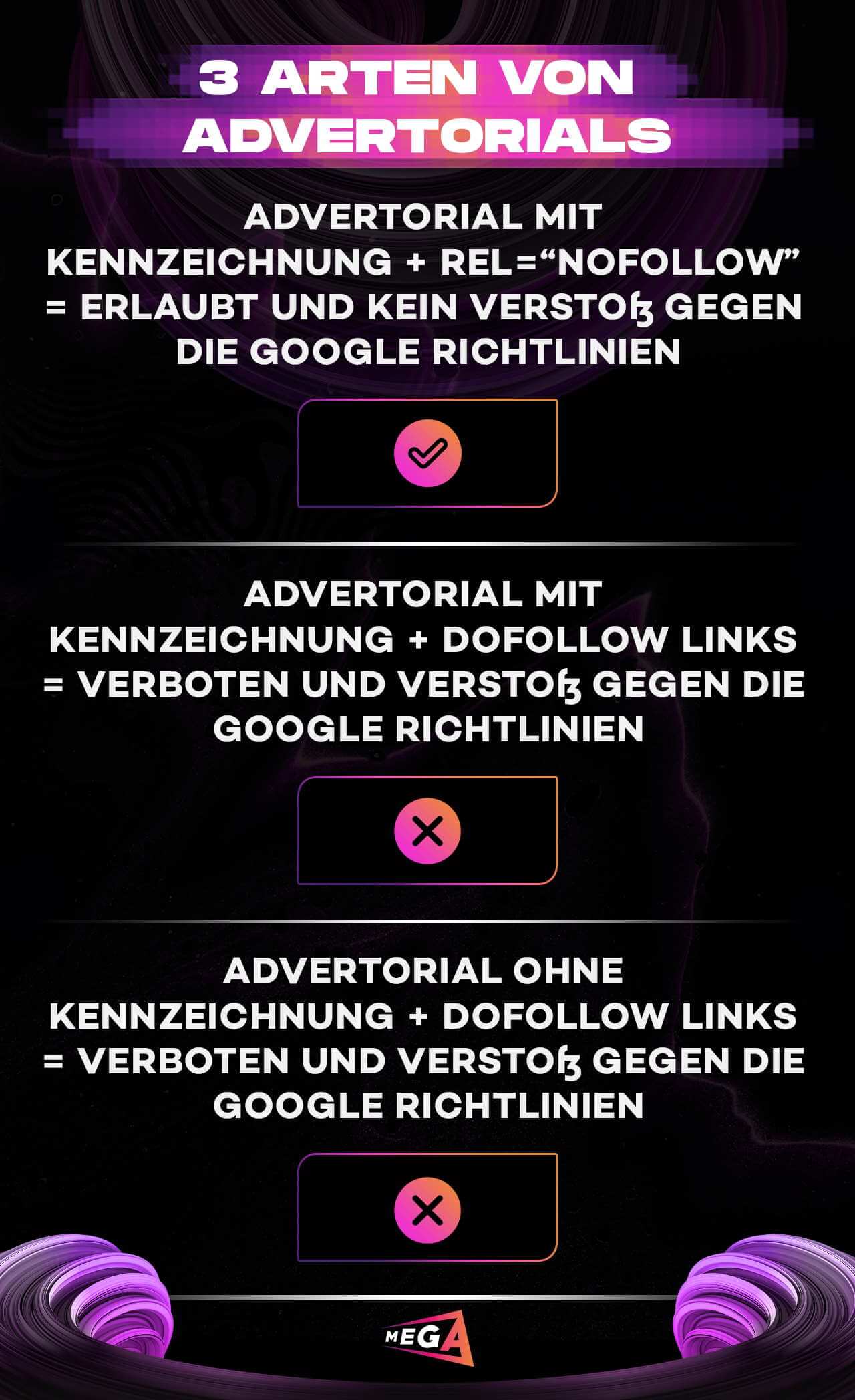
Advertorials im SEO-Bereich
Im Linkbuilding machen gekaufte Links in Artikeln nur Sinn, wenn diese dofollow sind. Das heißt, wenn der Linkjuice der linkgebenden Seite weitervererbt wird. Dadurch können die Google Rankings beeinflusst werden, was zu einer besseren Platzierung in den Google SERPs führen kann.
Allerdings ist diese Methode höchst fraglich, da dies verboten ist und man Gefahr läuft, von Google erwischt zu werden und im schlimmsten Fall abgestraft zu werden.
Google Mitarbeiter Matt Cutts sagt dazu folgendes:
We’ve taken action on this sort of thing and for years and years. And we’re going to keep strong action.” […] ”The Google News team recently published on their blog and said that, if you don’t provide adequate disclosure of paid content, whether it be native advertising, advertorials, whatever, whenever there’s money changing hands, if users don’t realize that sufficiently, because there’s not adequate disclosure, the Google News team mentioned that they might not only remove the paid content, but we’re willing to go up to and including removing the publication from Google News.
Matt Cutts, Softwareentwickler bei Google
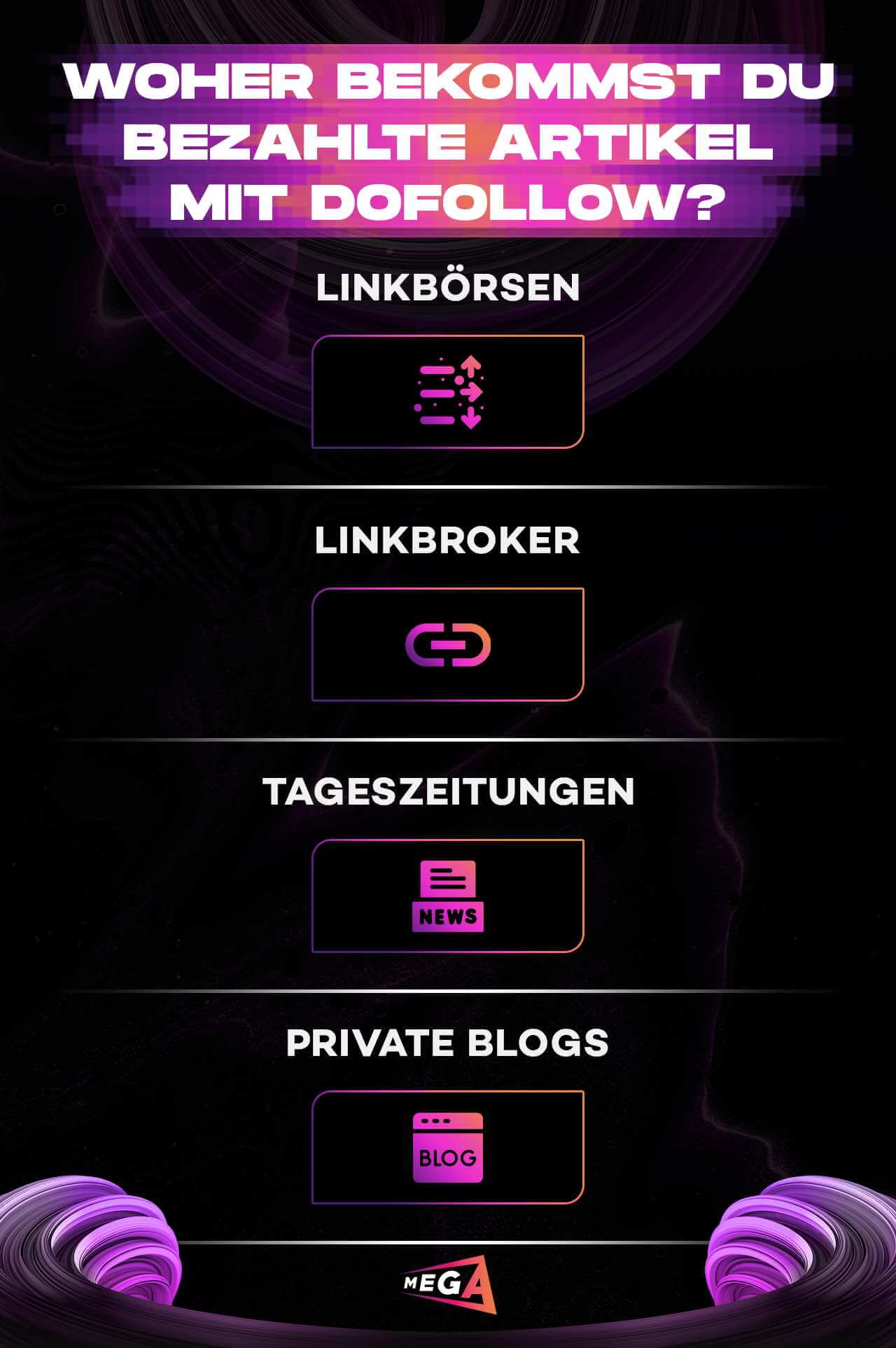
Unser Fazit zu Advertorials
Im Grunde bleibt es jedem Webmaster selbst überlassen, ob er Advertorials nutzt und diese kennzeichnet und das nofollow Attribut einsetzt oder nicht. Wem die treuen Leser wichtiger sind als die Suchmaschine und die Rankings, sollte die Advertorials so kennzeichnen, wie es die Google Richtlinien vorsehen. Letztendlich ist die Vorgehensweise auch weniger risikobehaftet, als Artikel nicht zu kennzeichnen und dofollow-Link zu integrieren.




